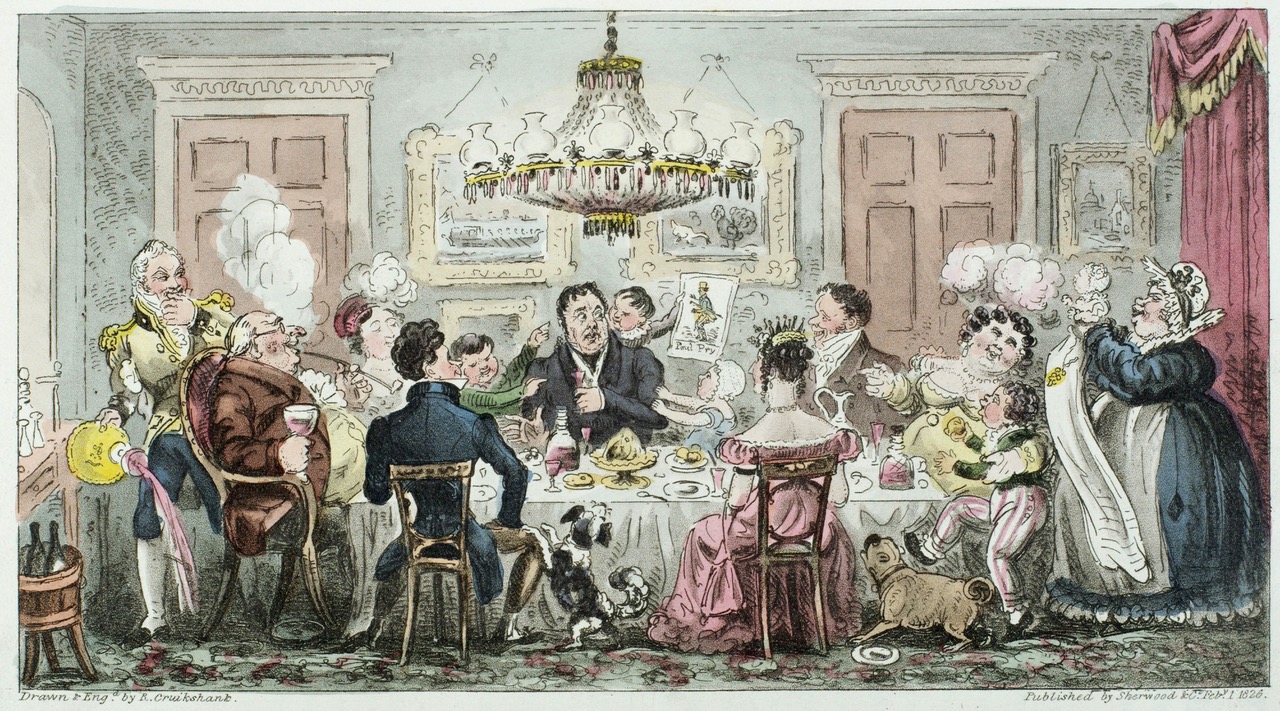

Welcome to Dined: a database of the dinner book kept at Holland House, Kensington, between 1799 and 1806. A dinner book is a written record of who came to dine at a given location on a given night, kept over a period of time. Dined allows you to search and browse for diners at Holland House, see their biographical details, and browse the events and places mentioned in the dinner book. You can also browse a digital facsimile of the original document.
Dining, and the sociability it facilitates, played a central role in eighteenth- and nineteenth-century culture. At present, aside from brief but brilliant accounts by the likes of Hester Thrale, Richard Brinsley Sheridan, and Lord Byron, we have little concrete sense of dining in this period. And yet many homes, clubs, and societies recorded the attendees at meals and gatherings in dinner books.
Millions of computable pieces of data lie dormant in dinner books, which represent the written fabric of dining networks. Dined is an attempt to digitally organise and analyse one such dinner book, with the hope that this process will open new interpretative vistas and possibilities. As the Index of People shows, Holland House is a place where Lord and Lady Holland entertained bankers, belletrists, civil servants, historians, journalists, poets, politicians, and sculptors, and these meetings and exchanges of ideas across occupations, interests, classes, and genders should make us question the discrete disciplinary spaces of much academic research. By digitally unlocking this entirely new archival resource there is the potential to break down disciplinary barriers and change the ways we view this period. Analysing a dinner book can help us to answer fundamental questions about sociability: how mixed was company—in class, gender and nationality—around the dinner table? does who attends dinner neatly map on to the supposed political or religious beliefs of the host? was there a common size for a dinner party, and how did this differ depending on the day of the week? what frequency of dining made someone an habitué of a circle, and what proportion of a table was occupied by these regulars? how did the composition of dinners differ between public and private events, and was there a preferred day of the week for formal public dining? how often in a week did this famous salon entertain other well-known coteries, and did well-connected diners frequent more than one society dining room?
As the Index of Events shows, the Holland House dinner books also functioned as a diary for this coterie, recording births, deaths, and moments of national importance. Lady Holland also records the coterie’s sociability beyond her dining room: in dozens of visits to the theatre, to friends’ houses in London and in the country, and to the masquerade balls which were enjoying a revival. The Index of Places allows users to trace the Hollands’ movements from the urban periphery at Kensington into both the fashionable West End and the chambers of power at Westminster. We can also see their commitment to European travel during the Napoleonic Wars, in trips to France, Portugal, Saxony, and Spain.
For an introduction to this case study see Holland House. For who we are see, to learn about the technical side of the database, and to get in contact with us see About. For reading on the intellectual background of Dined, the Holland House circle, and other interesting digitisation projects see Further Reading.